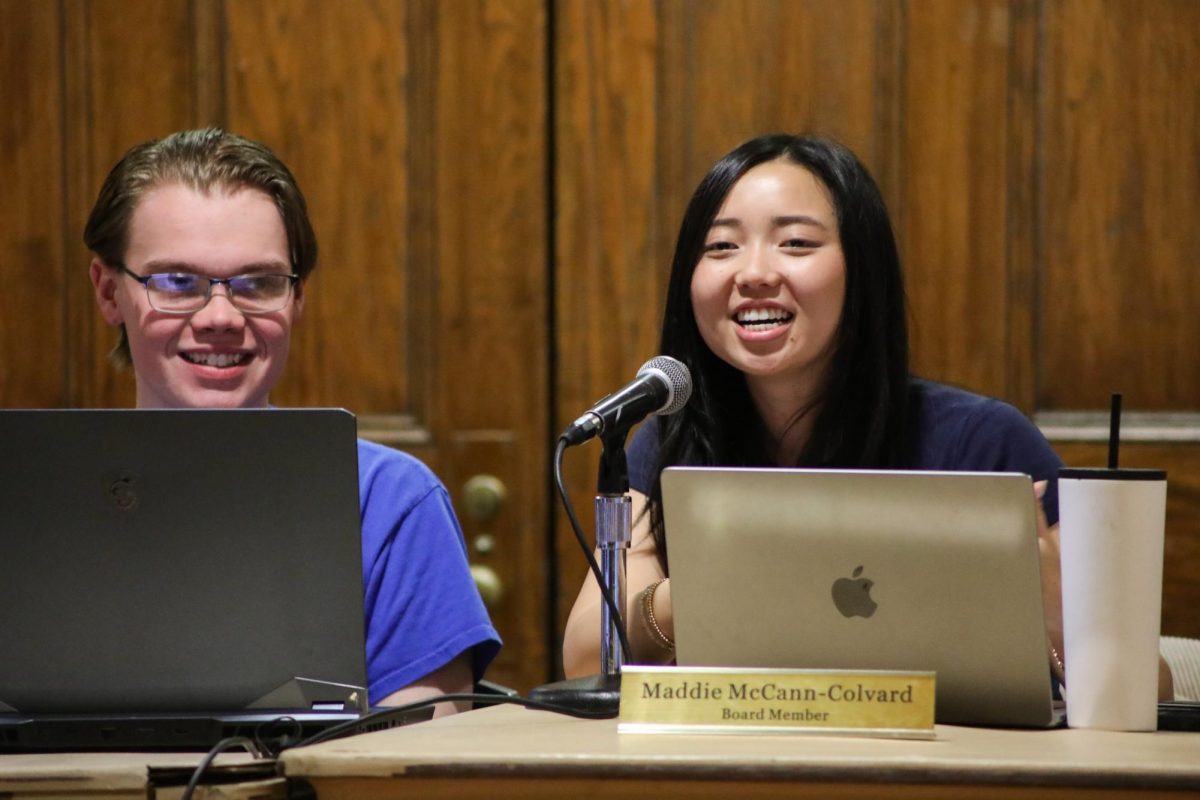Editorial: Video applications show clearer picture of students
March 22, 2015
You don’t need to pull an Elle Woods from “Legally Blonde” and create a larger than life production to get accepted into school — you just need to create a visual that shows — rather than tells — where your values lie.
You can write to a college admissions board about your die-hard dedication to rugby, but it doesn’t mean its members understand the early morning practices and the ambition it took to start your own league. That’s why Mitchell Moran-Kaplan opted to show his story to college admissions officers through a video actively depicting these feats.
Moran-Kaplan used his two-minute-long video to apply to Goucher College, which is a small, private, liberal arts school in Baltimore County, Md. Goucher College accepted 49 students, including Moran-Kaplan, solely through the merit of their video submissions. These innovative video applications are a less rigid, low-stress option in the college admissions process that help to modernize the entire practice.
This attention to technological advancement better reflects today’s evolving education system and mirrors the technological demands of the job market.
Goucher President José Antonio Bowen said the college admissions system is broken — applicants feel a hunger for new ways to show their abilities to colleges.
“We will be seeing more alternative applications,” he told the Washington Post.
This hunger, then, is a result of the wealth disparity between students who can afford extensive SAT training or consultants to help them write their admissions essays. Through video, you are seeing the applicant genuinely, not through a filter. Technological progress — such as video applications — is a step in closing the gap between privileged and less fortunate students. The videos illustrate the multifaceted personalities of applicants without the pressure of having to eloquently word it in an essay.
Colleges who have tried switching from one-page essays to videos have expressed concern that this new application technology isn’t adding much more substance to the application than what they contrive through other means. A representative from Tufts University told the Washington Post that the videos “weren’t adding substantially to what candidates were telling us about themselves.”
For this reason, students should have the option to either write an essay or submit a video — but colleges should not require both.
It’s unlikely that selective colleges will ever completely switch to the video application because transcripts and SAT scores remain a significant portion of an applicant’s profile. The Common Application, a Web portal for processing college materials, is employed by more than 500 colleges to process more than 3.45 million student applications a year. Featuring a five-second frame in a video with an image of a transcript is not enough, then. Universities cannot standardize this version of a transcript or run it through a processing system — this indirect form of submitting a transcript would only create more work for admissions officers. For this reason, these video applications are a smart supplement, but not a replacement for academic materials. Goucher College is an outlier when it comes to video-only applications.
Still, the videos are progressive — illustrating know-how in an era of technological upheaval can only help to diversify an applicant in a pool of prospectives. The videos actively illustrate a student’s personality and drive and can even eliminate the need for college entrance interviews for students applying somewhere far from their hometown.
The SAT already tests your writing abilities, so why not make a video and show you’re more than a one-trick pony? Application essays must undoubtedly get montonous for college admissions officers. Snatch their attention in a new way — force them to see why you belong at their school through a video.


